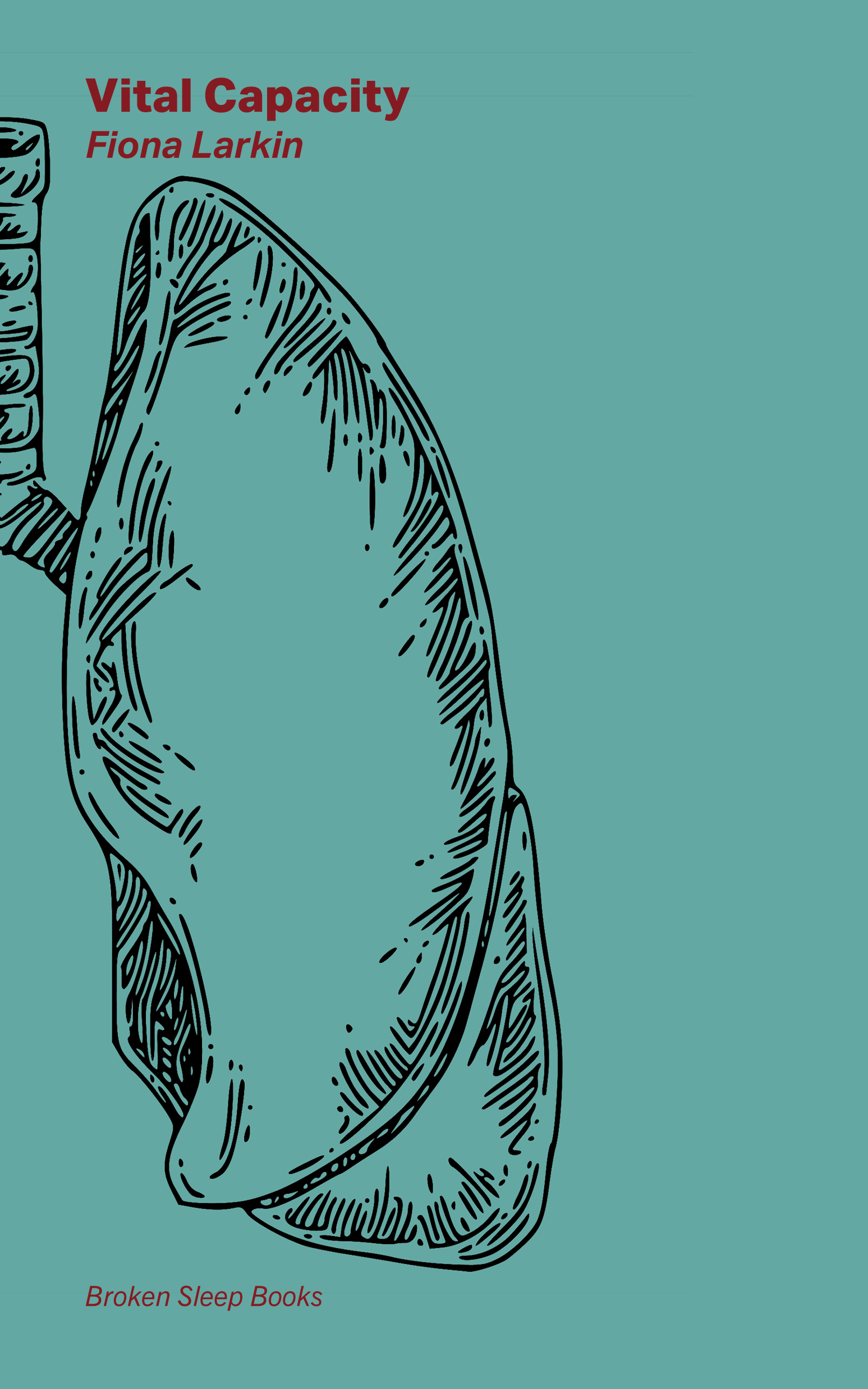Lesley Sharpe reads a sequence of poems that reflect on the devastating impact of tuberculosis
Fiona Larkin
Vital Capacity
Broken Sleep Books, £6.99
In her second pamphlet, Vital Capacity, Fiona Larkin explores both the complex biological processes of the lung, and the ephemerality of breath: breath as life force, as rhythm, language, and song. The lung’s physiological intricacy is anatomised in poems such as ‘Mirror’, where the refinement of a ‘Fortuny dress laid flat on the bed’ is set in contrast to the ‘pleated thing’ whose chest is ‘tight as a bud’. Again, in ‘The Voyage Out’ there is a cool elegance in
the growth
of each pleated,
delicate structure,
lungs folded flat
which is at odds with the corresponding image of the chest
compressed
by the tunnel which leads
into cold blue light.
Larkin’s characteristic interest in the way language too can be folded and unfolded to reveal new angles is apparent in ‘Waking to the News’, where common phrases are opened up to forensic examination: ‘There is a kind of pain called exquisite,/ a kind of curiosity called morbid.’ In a reworking of language, ‘the sputum flask in cobalt blue’ can become ‘a lover named Blauer Heinrich’, the cobalt a rare splash of colour in poems marked by their abstractions and absences. Thus the pale lilies elicited in the opening poem ‘Tuberculosis’ generate a funereal atmosphere in which the reader might ‘store our losses close to us’, and the lyrical eroticism of Keats’s ‘easeful’ death in ‘Phthisis’ is undercut by the lyrical negations which follow: ‘No Camille, nor Violetta,/ no Marguerite, not any flower’, where it is naming which generates the pathos of absence.
There is also renaming as re-orientation, where the drama of ‘Burning as the drowning starts’ (‘Phthisis’) is reduced to the voice of science: ‘this is multi-drug resistant’. The clinical voice of the reworked medical advice for the tubercular patient from 1962 (‘How to Ration New Medication’) reads, in its judgments about women and race, like a medical analysis one might have expected of an earlier century, while, in another shift of tone, Katherine Mansfield’s letter to her brother, written during the First World War, is reworked as a cento to capture the heightened vivacity of her tubercular experience, mirrored in ‘that girl with burning eyes’. The creative play of Larkin’s imagery is also evident in ‘The Airbnb’s Backstory comes to Light’, where the extended metaphor by which consumptive children can be restored to health pictures them as laundry reanimated by the fresh breezes of the Ventoux valley.
In masterful poems that shift from the opening collective voice to explore multiple viewpoints, the ephemerality of breath is tracked in language that is often hard to place, floating free of contexts. In ‘Tree Lungwort: a Taxonomy’ it is taxonomies of language that are relied upon to unfold meanings, lungwort and pulmonaria juxtapositions of the mundane and Latinate, as in the ‘Breathalia’, where trachea can become a ‘piper’, bronchioli become capable of ‘discerning/ each note’, alveoli ‘an end and beginning’. This sense of the rhythm and intimacy of breath is also explored in images of condensation in ‘Tracing the Night’, where ‘each exhalation, each plume/ of dream’ reveals the lung as storehouse for what can be briefly ‘made visible for an hour’. By contrast, the marked rage of ‘Did You Think You Could Relax?’ pushes against the impossible persistence of nature, where ‘every year a new corona of fronds’ incites feelings of violence, and exposes pressure.
It is this pressure which informs so many of the poems as they map the impact of tuberculosis in both its modern and historic contexts, building an accumulation of powerful images across poems. Through the intricate sequencing of her poems, Larkin simultaneously deconstructs our relationship with breath to reveal the complexity of our relationship to the life force itself, and the very organs which support it.
Lesley Sharpe
